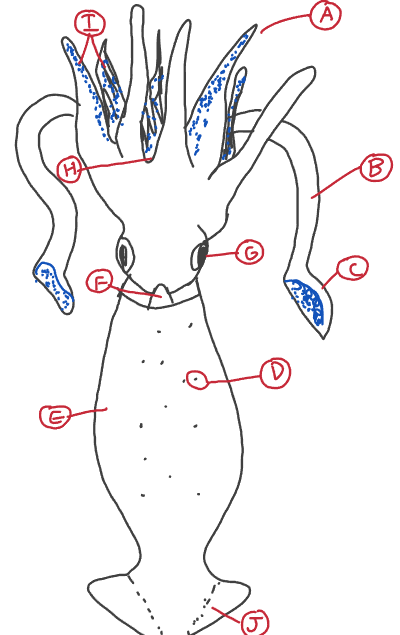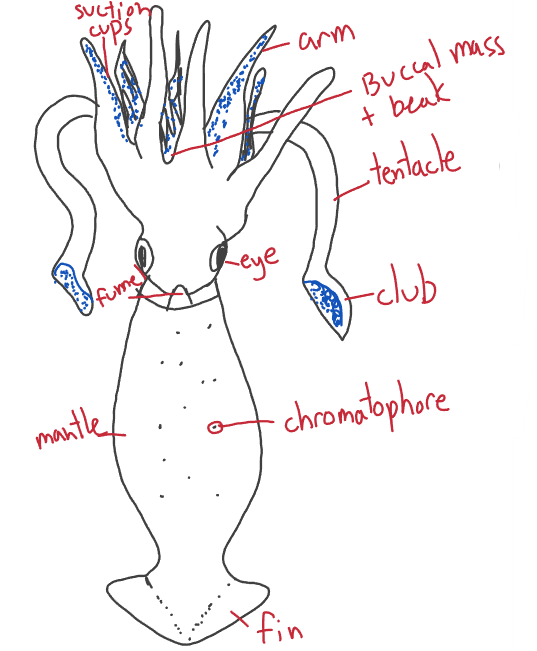Biology 11- Mollusks
1/27
Earn XP
Description and Tags
Name | Mastery | Learn | Test | Matching | Spaced |
|---|
No study sessions yet.
28 Terms
response of Bivalvia
no cephalization, simple nervous system
simple sense organs (ocelli, statocysts, touch receptors)
Feeding of Bivalvia
herbivores, carnivores, filter feeders
food and water move through incurrent siphon and towards the gills and mouth
plankton gets stuck in sticky mucus and cilia
respiration of Bivalvia
gills located inside mantle cavities
internal transport system of Bivalvia
open circulatory system
two “kidneys” lie below the heart or filter blood
blood works way through tissues in open spaces (cavities)
movement in Bivalvia
larvae are free swimming
adults are sessile
excretion in Bivalvia
anus empties into the excurrent siphon (remove waste and H2O)
Solid waste passes through anus in feces
Ammonia is filtered from the blood by Nephridia
reproduction in Bivalvia
External fertilization
Eggs and sperm released in enormous numbers
Hermaphrodites pair and fertilize each other's eggs at the same time
**oysters can change sexes and produce eggs sometimes and sperm other times
response of Cephalopoda
No brain
consists of many fused ganglia.
Very intelligent and can remember information
Advanced eye
Can learn
feeding of Cephalopoda
Uses a powerful beak and radula to tear apart prey
respiration of Cephalopoda
Gills located inside mantles cavities
internal transport system of Cephalopoda
Small internal shell or no shell at all
Squid's internal shell is a thin, flexible rod called a PEN
closed circulatory system
blood always found in vessels
movement in Cephalopoda
Most have 8 tentacles with suction cups to capture prey
excretion of Cephalopoda
Solid waste passes through anus in feces
Ammonia is filtered from the blood by Nephridia
Reproduction of Cephalopoda
internal fertilization in the female
Feeding of Gastropod
uses radula to feed
carries hundred of tine teeth
place the tip of the radula on food and pull the skin back and forth
carnivores use radula to drill through shells
herbivores use radula to scrape algae
Internal transport system of Gastropod
Open circulatory system
Blood doesn't always travel inside blood vessels
works its way through the tissues in open spaces called CAVITIES
Movement of Gastropods
Move with a broad, muscular foot located on their stomach which contracts
Excretion of Gastropods
Solid waste passes through anus in feces
Ammonia is filtered from the blood by Nephridia
Reproduction of Gastropods
Internal fertilization in the female
Hermaphrodites pair and fertilize each other's eggs at the same time
Response of Gastropods
6 pairs of ganglia connected by major nerve chord
decently well-developed
Trochophore
special mollusk larva
Mantle
thin tissue layer that covers the body
visceral mass
soft portion of organism that contains internal organs
Mollusk
soft-bodied animals that have an internal or external shell
shell
made by glands in the mantle that secrete CaCO3
how do Gastropods protect themselves?
hide under things
ink
swim away
shell
poisonous chemicals
nematocysts
How do cephalopods protect themselves?
release ink/smoke screen
camouflage
speed/jet propulsion

label
